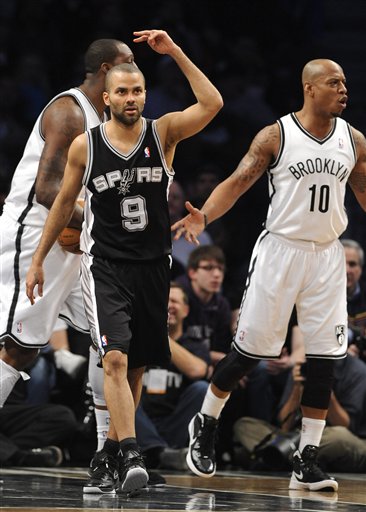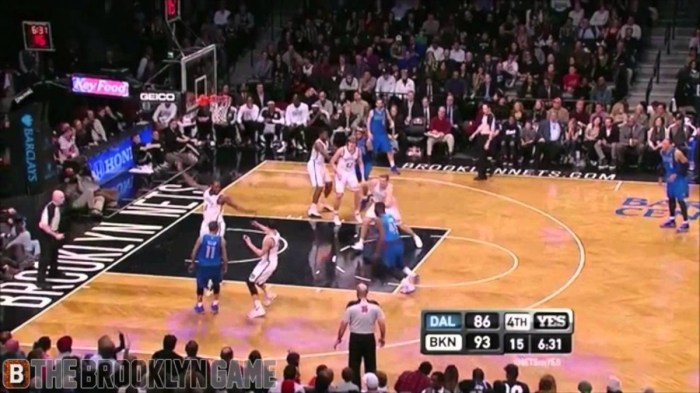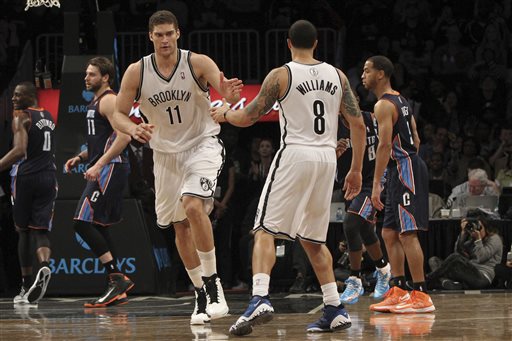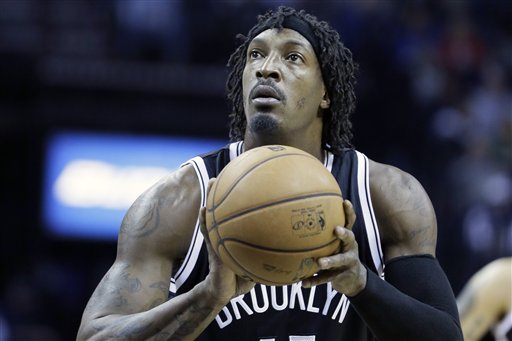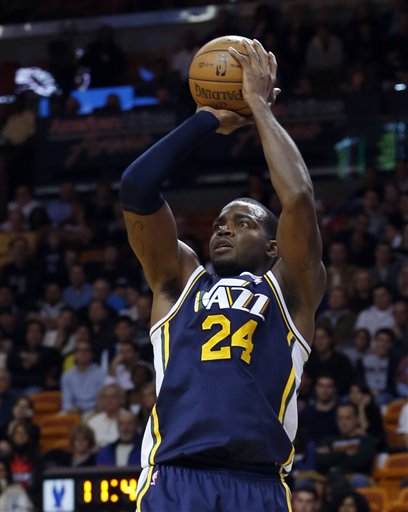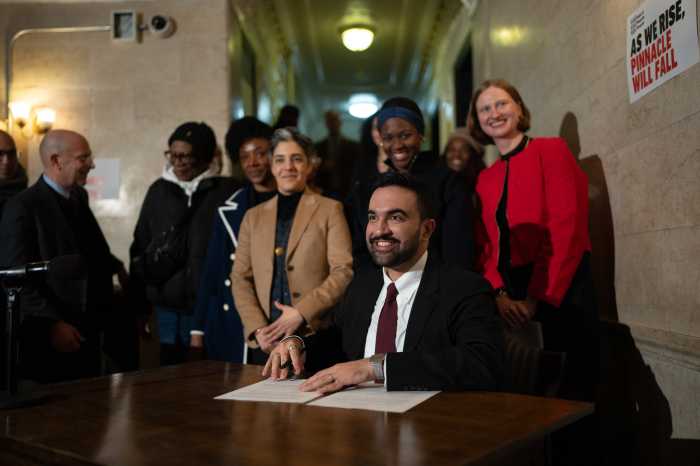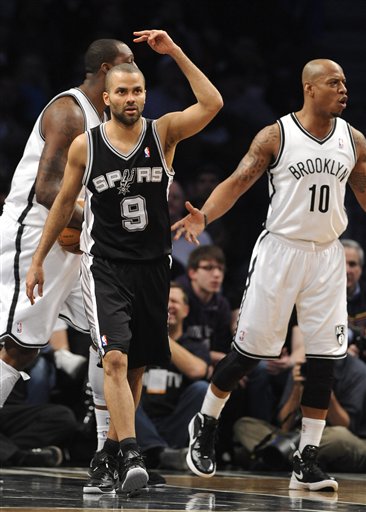
“The strategy was to get as much help as we could for the guy that was covering him,” coach P.J. Carlesimo said after the game, “play his pick and rolls. If he beat us, make him beat us outside. … The strategy obviously wasn’t good enough for Tony tonight.”
Gerald Wallace was more blunt about it: “Tony Parker runs the pick-and-roll pretty much better than anybody in the NBA.”
It wasn’t a stroke of magic, nor a stroke of luck, it was merely a great player reading the game and making the right decision in the pick-and-roll. Let’s take a look.
Above is a video of six plays in which Parker utilized the pick-and-roll to give himself a basket. You’ll see a few common threads through most of these plays. One is re-screening. “He was putting a lot of pressure on us,” Brooklyn Nets point guard Deron Williams admitted. “They were setting a little screen and then re-screening it, and it was really tough for us to defend tonight.”
Though a pick-and-roll play is usually standard — big man sets the screen, little man dribbles around it looking to score Parker often eschewed or progressed through the first option off the pick-and-roll screen and waited for a second or third screen before trying to score. In the six examples above, five of them utilize more than one screen.
A big common thread is Brook Lopez. Though no Brooklyn Nets player nor coach was forthcoming about the pick-and-roll strategy to contain Parker, it appeared that the Nets would “blitz” or “squeeze” Parker with the big man when he was driving towards the middle of the court (perhaps to cut off the cross-court passing lane) and would “cover” when driving towards the corner, perhaps in an attempt to push him away from the paint. You can see an example of that strategy on the first play in the video: Parker uses the first Splitter screen towards the middle of the floor, and Lopez darts upward; he then re-sets and uses the Splitter “re-screen” towards the baseline, and Lopez hangs back.
(The second play, featuring Andray Blatche instead of Lopez, features Blatche hanging back on his man through the screen even as Parker goes towards the middle, but I’m not sure anyone’s accused Blatche of defensive awareness before. This example is also the only one that features only one screen. Don’t need many more when you can get to the rim that quickly.)
Lopez was Parker’s favorite target in the pick-and-roll, and he often used the re-screening action if he didn’t get a screen with Lopez as the big defender. One example of this is around :41; Parker gets blitzed on a screen from Kris Humphries, doesn’t attack in it, then gets a re-screen from Tiago Splitter that switches Lopez onto him. Parker then just toys with Lopez en route to a layup.
“He was playing very well in the pick-and-roll, and I did an extremely poor job defending the pick-and-roll,” Lopez conceded after the game. “Not talking to my teammates, not being there to slow him down or pick up the roller at all.”
Another common thread is Parker’s intelligence and awareness. After Parker had burned the Nets a few times on the pick-and-roll, the Nets occasionally “stacked” the screen side — overplaying behind the screener in anticipation of Parker trying to make a dive for the basket around it. When the Nets did this — it involves the guard forcing his way around the screen early, and the big man “blitzing” above the screen — Parker quickly tore in the other direction, giving him an open lane to the basket.
One key example of this is the play at :34 — keep an eye on how Williams goes over the screen only after Parker throws a hesitation dribble in that direction. Parker then suddenly bursts to the basket around a re-set Tiago Splitter, and both Williams and Lopez are suddenly out of the play, leaving only Kris Humphries to try to stop a full-speed Parker.
The Brooklyn Nets have had troubles with quick guards all season, usually in transition — Atlanta, Washington, Houston, and Milwaukee are just a few examples of teams that abused the Nets with speed. But the Spurs did it mostly in the halfcourt; it wasn’t magic, just basketball. Tony Parker is an elite point guard, and he showed exactly why Sunday night, because of his ability to read, react, and dominate defenses. The Nets were no exception: it was merely another example of a glaring Brooklyn weakness, as they were unprepared and unable to defend a player of Parker’s caliber.

